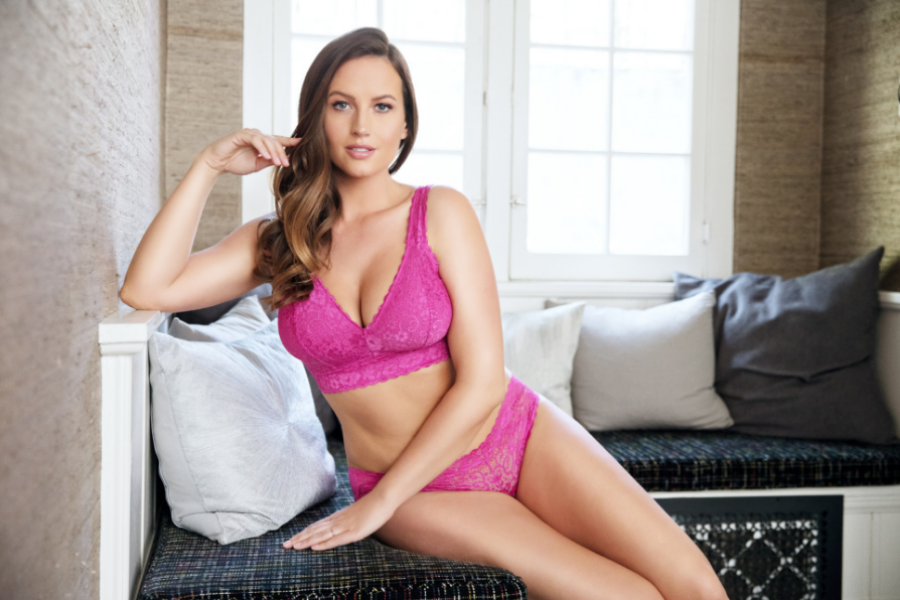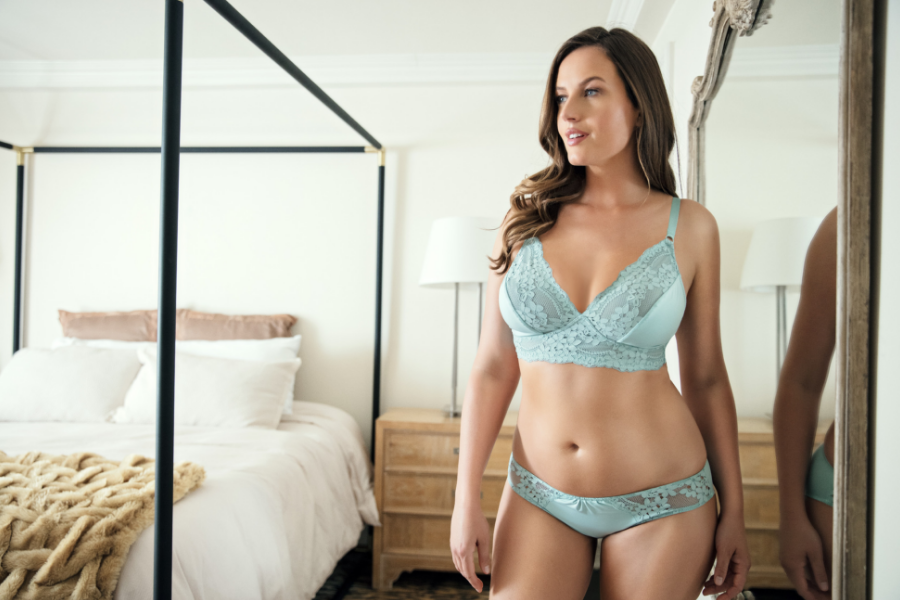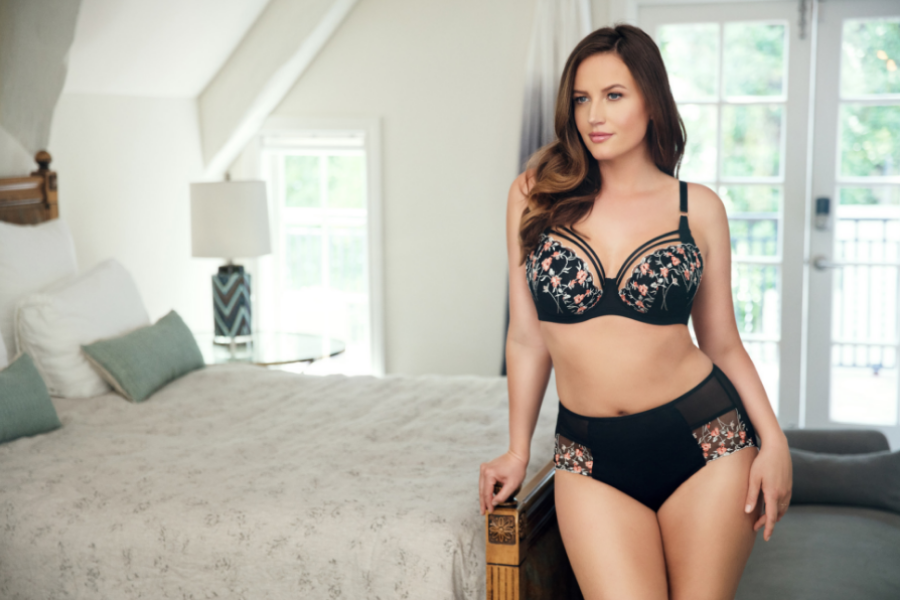A Guide To The Different Parts Of A Bra and What They Do
Have you ever wondered why a bra so often costs more than a t-shirt does, despite using a fraction of the fabric? Well, here’s the thing – bras are super complex! Fabric is just one of many components required to make one. Even a basic, triangle-cupped bralette is typically comprised of over a dozen parts. And a wired bra with some pretty decoration? That could easily have started life as twenty, thirty, maybe even fifty individual pieces.
There’s elastic, there’s metal hardware… And that fabric? We’re not just talking a front piece, a back piece and two sleeves like you need for a simple t-shirt. Just consider the ‘3-part cup’ bra, a popular full-bust style. As the name suggests, you need three pieces of fabric for one cup alone, and more if there’s a lining.
Yes, the pieces are quite small. But for each one you add, you also add construction time. The primary cost of a bra is in labour to sew it – piecing all of that together is fiddly and time-consuming. Start cutting out components to keep your costs down though, and you’ll soon find the bra no longer fits well or offers much in the way of support. Everything’s included for a reason!
The components in a bra
Here’s a list of the basic components that go into an underwired bra, and why each one is needed. Bear in mind that depending on the bra design, many bras contain elements in addition to this list, from decorative bows to padding or boning.
Fabric
To cover and support the bust, and to create the band which is necessary to hold the cups in place. Additional fabrics may be used to create linings, either for comfort reasons or to make parts of the bra stronger and more durable. And more may be used to add pretty lace overlays and trims!
Underwires
Increases support by creating a strong, fixed base for the cup fabric to attach to, and to channel the breast tissue into a particular shape.
Wire casing
Creates a soft barrier between the hard metal underwire and your skin, for comfort.
Elastic
Creates straps that fit well and stay in place, and to make the band do the same.
Rings and sliders
Allows the strap length to be adjustable, for a better fit.
Hook-and-eye tape
Creates a fastening so you can get the bra on and off easily, and also make that fastening adjustable – again, for an improved fit.
Related: The True Cost Of Buying Cheap Lingerie
The three main parts of a bra
Rather than breaking a bra down into its individual components, you can also look at it as a garment that has three parts – a band, two cups, and two straps. Here’s what they each do – and why it’s still possible to make a functional bra with no straps.
The band
This provides the vast majority of support in a bra – roughly-speaking, 80%. Yep, bras support from below, not from above. If all that weight were being hung from your shoulders, that would not be very comfortable – especially if you have a heavy bust!
So the job of the bra band is to distribute a lot of that weight around your ribcage. It also provides a firm, non-slip base to anchor the cups to, which is why it’s important that your bra band fits relatively snugly.
The cups
The cups do support some of the weight of your breasts. However, primarily, their job is to ‘shape’ them. Maybe you want your chest to be smooth and round. Or maybe you prefer it perky and pointed. Some bras are even designed to flatten.
It’s all down to the cup design, from the direction the seams are sewn in to the type of underwire, padding or molding used (or lack thereof). Remember: just because you want lots of lift and a bra gives you a more relaxed and natural shape, it doesn’t mean it’s a bad fit – it might just not be designed to create the shape you want.
The straps
With the band doing most of the heavy-lifting and the cups also helping out, the straps actually only do a fraction of the support work. That’s why strapless bras are able to exist that still offer shape and lift! Mostly, the straps help to stabilise the bra, holding it in place if you twist or lean forwards.
In bras with cups made from unstiffened fabric, they also help to pull the upper edge flush against your skin, so it doesn’t wrinkle or flop over.
Hopefully this article has given you a newfound respect for these fashionable feats of engineering! Did you know that bras were made up of so many parts?
Related: How Should A Bra Fit?
We Highly Recommend
Whether you’re shopping for new everyday bras or lingerie for a special occasion, it’s always a good idea to seek out a second opinion. We know how hard it is to find bras that fit well and feel good, especially when you’re doing it on your own. If you’ve ever felt unsure about your bra size or you just don’t know where to go to find good bras, it’s time to let a bra fitter help.
Many specialty lingerie boutiques offer bra fittings. Their expert bra fitters will take the pain and frustration out of bra shopping and do all the work for you. Even better, their product knowledge can save you time and money. Plus, they know where all of the best bras are hiding.
If you’ve struggled with finding bras in the right size, it’s time to make a change. Visit our specialty store locator to find a store near you and schedule an appointment.
Happy bra shopping!






